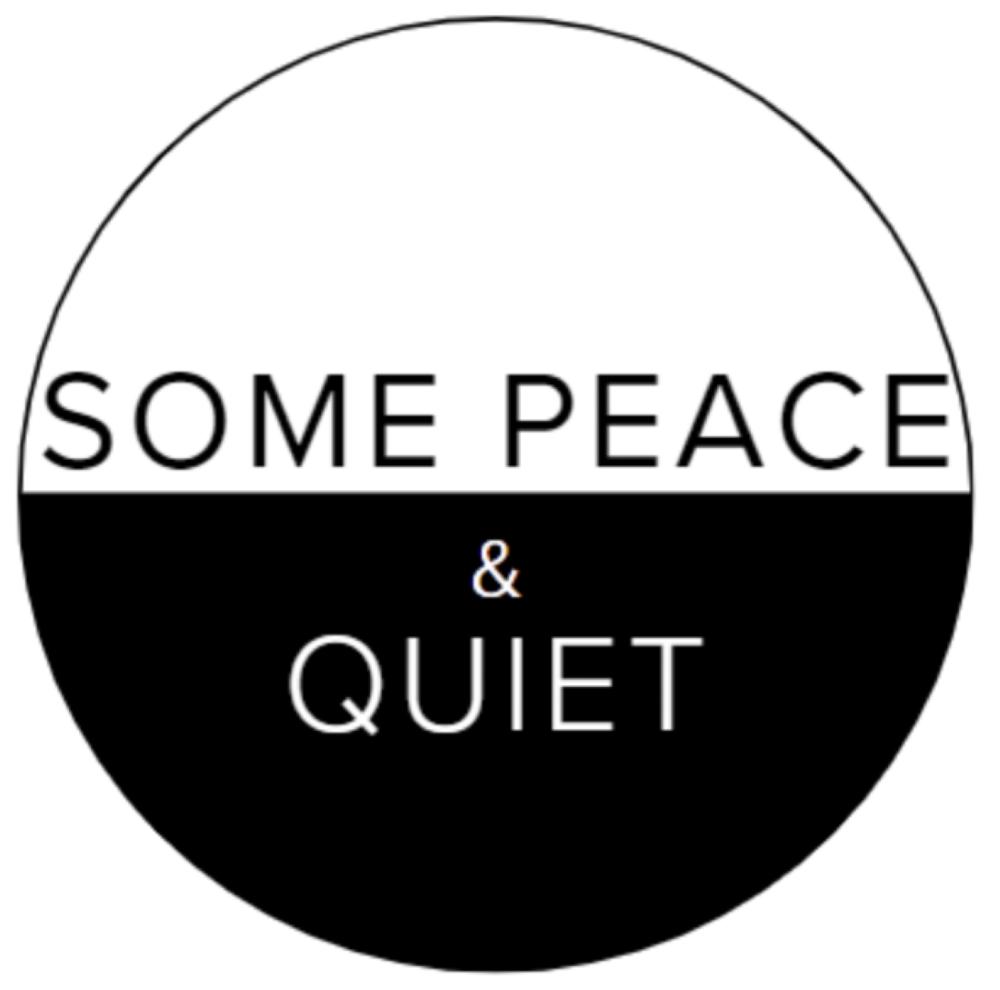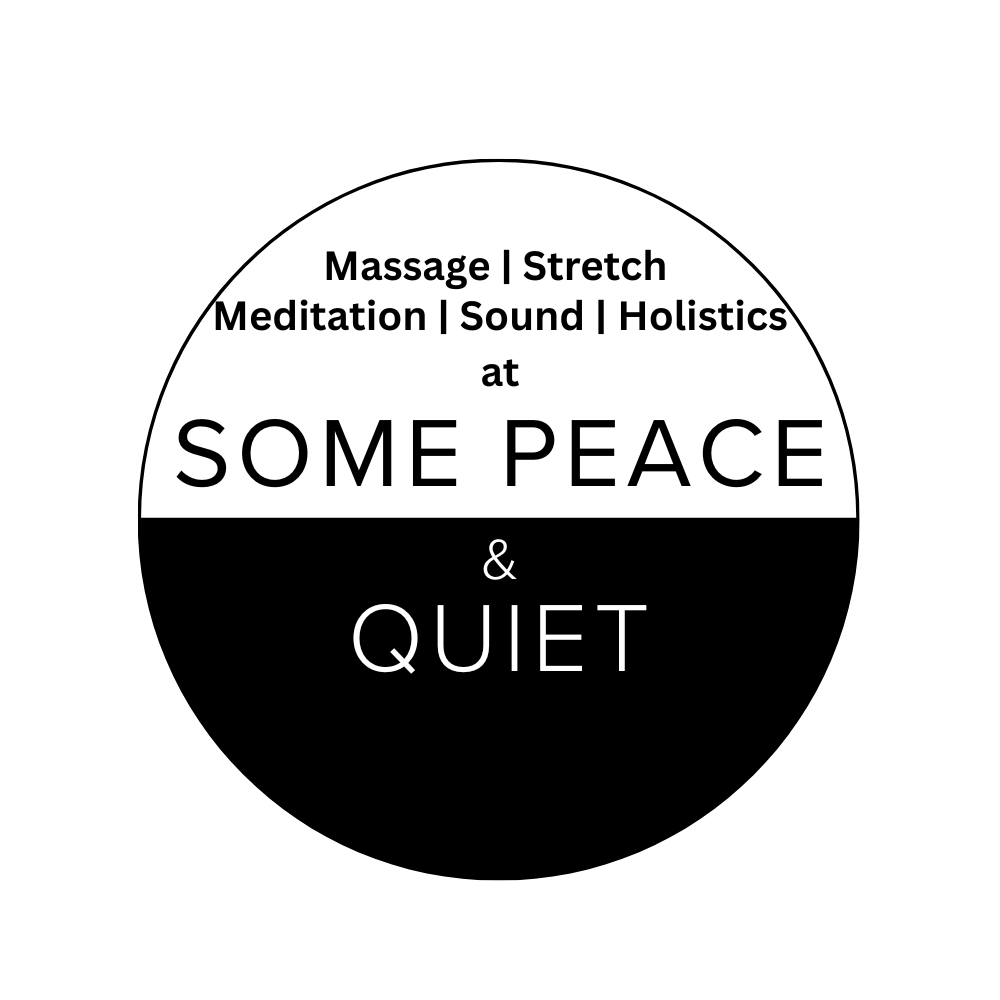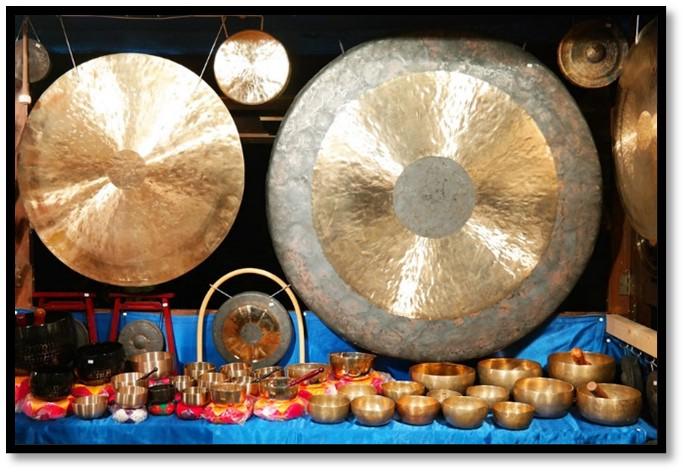
What is Sound Therapy?
Sound Therapy is the ancient practice of using energy, frequency and vibration to harmonize the body, mind and spirit.
“If you want to find the secrets of the Universe, think in terms of energy, frequency and vibrations.” – Nikolai Tesla
There is no such thing as complete silence. Sound is everywhere. Sound, including noise, are simply vibrations that your body feels. Sound Therapy is used to retune your body using frequencies to counterbalance modern life noises from engines, machinery and electronics. Having the right vibration is so important that we just need to look at NASA as an example.
The most fascinating naturally occurring vibration is known as Schumann's Resonance. It is an electromagnetic resonance in our atmosphere that's triggered by lighting and is vibrating at an average of 7.83 Hz all the time. It puts our brains into a brain wave state around alpha and theta. It's so important to us as a species that NASA feeds this vibration to astronauts when they are in outer space. NASA does Sound Therapy.

“The highest goal of music is to connect one’s Soul to their Divine Nature, not entertainment”
- Pythagoras (569-475 BC)
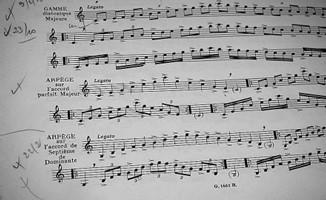

Everything in our Universe, including you, has a frequency because protons, electrons and neutrons within atoms vibrate.
There are 5 levels of vibration:
- Pure Frequencies
- Tones or Timbres
- Musical Intervals or Chords
- Music
- Energy
Energy is the most powerful vibration and can only be described by quantum physics because it’s invisible, yet still exists.
In physics the ability of one thing to cause another thing to vibrate is called Resonance:
1. Resonant Frequency – Everything vibrates at its own natural frequency
2. Resonant Fields – Two objects that have the same resonant frequency create a Resonant Field
3. Resonant Dominance – A stronger vibration will overcome and entrain a weaker vibration into the same vibration as the stronger one but not transform it
4. Transformative Resonance – A stronger vibration transforms the resonant frequency of an object so that its resonant frequency becomes that of the stronger vibration
5. A Consistent Vibration in More Powerful – The more consistent a vibration without distortion or distraction, the more powerful it is

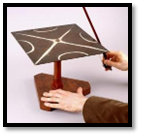
These images were created by Ernst Florens Friedrich Chladni, a German physicist and musician best known for his work in acoustics.
Chladni invented a method for visualizing the patterns of vibrations on mechanical surfaces. Known as 'Chladni plates' - metal plates were vibrated using a violin bow where patterns formed as sand settled at the nodes of two- dimensional standing waves, The sand was excited on a metallic plate driven by a resonant frequency, what we call today as a Hertz (Hz).
Different vibrations, or frequencies of Hz created different shapes with the sand on the same plate. You may recognize some of the basic shapes used in geometry, architecture and even biology in these results.
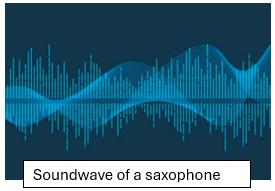
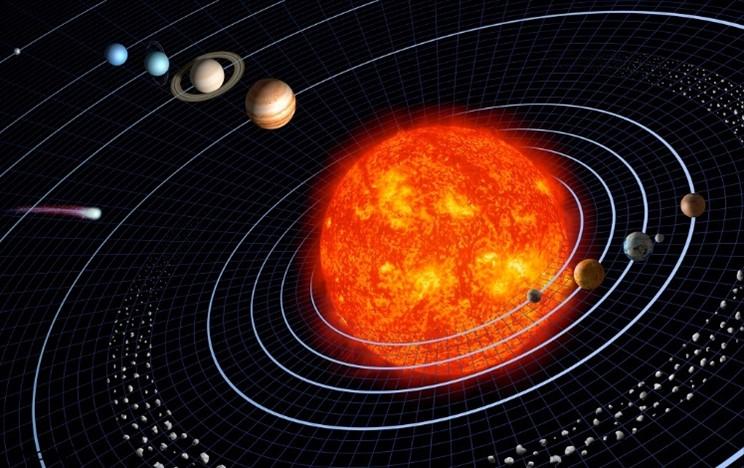

Hertz (Hz) is the unit of measurement for frequency, which is the number of cycles or oscillations that occur in one second. Musical notes are determined by their resonant frequency or Hz and even our solar system has frequencies.
The Sun vibrates, the Earth vibrates, and the 70 trillion cells that make up your body are all vibrating at different frequencies but in harmony with one another and that’s our living matrix. Somehow they all work together, and we are alive. It is also our Universe, our solar system of orbiting planets around our Sun that are doing so in harmony but all at different frequencies. Our solar system’s harmony is measurable and is the basis of how we measure time, days, years, and seasons. The rotation of the earth and her moon that rotates around the Sun are in orbit a.k.a. harmony with all the other planets and their moons in our solar system.
Our solar system is just 1 out of 3,200 solar systems within the Milky Way galaxy which sits in a neighborhood with over 50 other galaxies called the Local Group. Its members range in size from dwarf galaxies (smaller galaxies with up to a few billion stars) to Andromeda, our nearest large galactic neighbor. That’s a lot of vibrations and frequencies!
In 2004, John Peter Grubert referenced in his paper on Gravitational Frequencies of Extra-Solar Planets a conclusion from the 34th Lunar and Planetary Science Conference in 2003 “that there is a gravitational pulse in space, which varies in the Solar System between 1.5 Hz and 1.8 Hz. This frequency causes the planets and their moons to vibrate in such a way as to create resonant or quantum orbits.”
From that conclusion twenty years ago, scientists calculated the frequencies of our planets. Of course, these sounds are below the hearing range of human beings, but they still exist because the planets are vibrating and so are you. Our world gives us the illusion that things are solid. Your quartz countertop and wood cabinets in your kitchen for example, they seem solid but they’re not. The atoms in those objects are still vibrating but at incredibly slow speeds. Science has proven that vibration, frequency, tones, notes a.k.a. sound can affect objects and has helped advance medical science.
Today’s modern medicine has harnessed sound frequencies to use for medical procedures. What is probably the most recognizable form of this medical procedure is the Ultra-Sound.
Now we use high-intensity focused ultrasound (HIFU) to treat conditions like tumors and sound therapy to treat kidney and gall stones.
Science has moved onto studying how sound waves can help the body with comorbidities, as a preventative of disease along with treating mental conditions such as stress, depression, and anxiety.
One study with diabetic and non-diabetic participants, looked at the effects of vibration applied to the body and was acknowledged by the FDA in 1996 to increase blood circulation. In a National Institute of Health (NIH) study Maloney-Hinds used 50 Hz vibrational stimuli for five minutes on participants’ forearms and found the production of nitric oxide, the chemical compound that plays a key role in blood flow and oxygen supply to tissue, increased by 374% in the healthy controls and by 236% in the diabetes group.


One of the questions of neuroscience is whether there is a way to regenerate or repair neural damage from neurodegeneration, stroke, transected nerve ends, etc. Electrical stimulation is one intervention that has shown some success in creating axonal regeneration and neurite outgrowth. In this same study paper by the NIH, vibratory sound in the 10–100 Hz range had a positive effect on neurite growth with the strongest effect being at 40 Hz.
The Vagus nerve, one of the 12 cranial nerves, serves as a major parasympathetic (efferent) component of the autonomic nervous system and plays a key role in the regulation of emotion including anxiety and depression. It is the largest nerve in your body and is directly connected to all of your organs except the spleen starting from the ear drum.
Why this is important to sound therapy is that it completely bypasses the brain and gets its signals directly from the ear drum. Not only are the cells within the nerve experiencing the vibrations of sound, but the largest nerve in your body is stimulated by sound directly from the ear drum. For the brain, the ear drum converts sounds into digital pulses for the brain to make a determination whether it's liked or not. Sound Therapy can change the brainwave state and train it to like certain sounds, but Sound Therapy can reach your organs immediately without needing your brain to signal whether the sound is good or bad.
A study of patients with depression used relaxing music with a low frequency soundtrack that activated a vibrotactile transducer at the abdominal level at the back of the chair sending impulses to Vagus nerve for 20 min in eight sessions over 3–4 weeks.
The authors did not report what specific frequencies they employed but maintain that stimulated at 240Hz did find a reduction in depression due to the stimulation of the Vagus nerve.
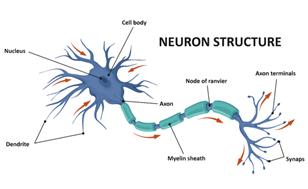
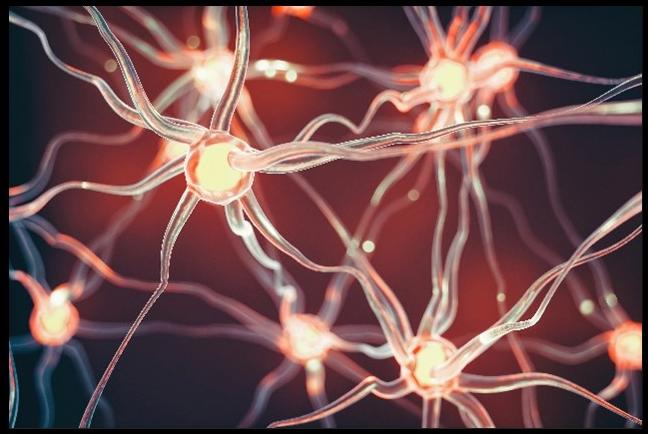




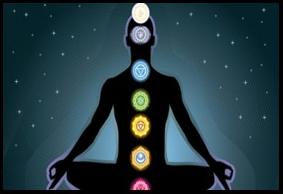
Eastern ancient medicine has used sound therapy through the use musical instruments such as gongs, bells and vibrating bowls called ‘singing bowls’. Even ancient Greek physician Hippocrates administered musical treatments to his patients in 400 B.C. In the Americas, Native Americans use sound in their healing and spiritual traditions with drums, shakers, rattles and flutes.
Both Native Americans and Eastern civilizations also use the sound of one’s voice in their healing and spiritual practices. Physical healing and spiritual practices go hand in hand, because healing the human being involves healing their human spirit.
Many practices have now been documented scientifically to show the affects sounds have on the body, disease, mood, cognitive abilities and spirituality.
Many of these civilizations believe in chakras and have tuned their sound therapy instruments to certain Hz frequencies to help cleanse and charge chakras to keep them all in balance. The belief is that unbalanced chakras lead to disease of the body and mind.
Western medicine is now catching up and catching on to using sound. Not just focused as in being medical instrument, but in a more holistic practice exposing your body to vibration that are different from the ones modern life throws at you every day.
